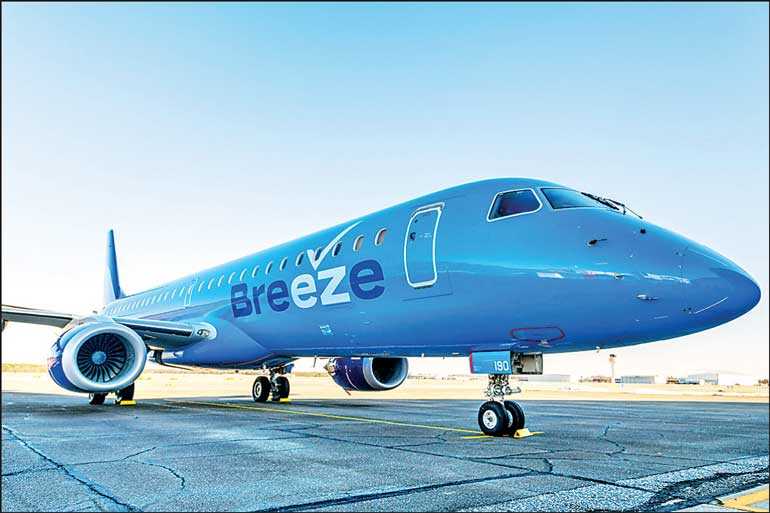Saturday Apr 19, 2025
Saturday Apr 19, 2025
Monday, 5 April 2021 00:00 - - {{hitsCtrl.values.hits}}

The next year or two are likely to be unpredictable, and any new entrant must be nimble enough to cope with many changes
 There is a common misconception that the Chinese character for ‘crisis’ is a combination of ‘danger’ and ‘opportunity’. While this is not strictly true, the concept is valid.
There is a common misconception that the Chinese character for ‘crisis’ is a combination of ‘danger’ and ‘opportunity’. While this is not strictly true, the concept is valid.
COVID-19 has decimated the airline industry. Only the largesse of governments worldwide has kept airlines alive. Now, with vaccination programs gaining pace, the first signs of a recovery can be seen.
Government intervention has also lowered the cost of capital to levels unseen for decades, as central banks try to ignite a recovery. Fuel prices have recovered from the historic lows reached 11 months ago, but are still acceptable. A huge stockpile of aircraft is available, and landing slots at previously congested airports are easy to acquire. So, is this an opportunity for a brave investor to jump into one of the most demanding and risky of businesses?
Historic data
Looking back, one indisputable fact is that the airline industry is not exactly a lucrative business. Data from the International Air Transport Association (IATA – an industry trade group representing 290 airlines) makes it clear that the industry survives on razor-thin margins, performance being inextricably linked to the often-volatile price of oil. The percentage of airline revenue spent on fuel varies from a high of 30.6% in 2014 (when prices peaked) to a low of 20.9% in 2016 – at the bottom of the oil price, averaging out to 24.5% of income in the period 2014-2018.
Airlines’ net profit margins during this period averaged 4%, not exactly the highest of yields considering the level of capital invested and the high recurrent costs. North America had the best-performing airlines with an average EBIT (Earnings Before Interest and Taxation) margin of (11.5%); Africa’s were the worst with a -0.3% return. The Asia-Pacific region’s airlines collectively came in at 5.6%, but this number does not reflect the few efficient carriers that do well. Asia’s many dinosaur airlines, propped up by government subsidies, are woefully inefficient and distort the region’s data.
Return on capital
Investors expect to earn a return on their capital similar to that achieved by assets with a comparable risk profile, a concept known as the ‘weighted average cost of capital’ (WACC). Airlines in North America exceeded such a return in recent years, thanks to a combination of lower fuel prices and painful structural changes made in the previous years.
European airlines, particularly the Low Cost Carriers (LCCs), did not fare as well, but managed to raise yields and provide a better than-WACC return to their shareholders. Asian airlines on the other hand have not been able to deliver similar results, due to an oversupply of capacity (too many empty seats) that led to highly competitive (very cheap) ticket prices.
Costs post-pandemic
Fuel prices, after falling to an unprecedented low in early 2020, have recovered to levels similar to 2015. With most oil producers applying production limits, this is forecast to remain at these levels despite low consumption.
A key opportunity exists in the acquisition costs of both aircraft and personnel. The COVID-19 crisis led to wholesale grounding of aircraft, and many crewmembers were made redundant. Monthly lease rates for a 10-year-old aircraft (the most likely age of equipment for a start-up) have fallen by more than 30%, according to Ishka, an aviation finance consultancy based in London.
While comparable wages for pilots and flight attendants are not easy to obtain, a similar saving is probably realisable given the numbers of under-employed, available crew. The state-subsidised airlines with strong unions have prevented more rational wage packages, but with many national carriers on the brink of bankruptcy or privatisation, this issue will be addressed soon.
Market sentiment
The biggest unknown is, of course, market sentiment. Governments have approached the procedure of vaccinating their populations at different speeds. Unavailability of vaccines and an unseen price war raging in the background make it impossible to forecast a transparent path to universal vaccination. Without a clear idea of what vaccination requirements for international travel are likely to be, no airline that relies on a ‘hub and spoke’ system of consolidated traffic can expect an early return to profitability. As long as travel restrictions remain, the ‘point to point’ model, at which the LCCs excel, is the most likely to succeed in the near future.
Airlines with strong domestic demand are the most optimistic. But even then, as Australia’s recurring ‘lockdowns’ show, it is likely that travel will be restricted in unpredictable ways for some time.
The only bright side of the pandemic has been the freight market. After a torrid period of negative returns in the cargo business from 2014 to 2016, yields recovered well. Then the pandemic saw a sharp rise, with freight rates tripling in some markets in 2020 – to the delight of the world’s few specialised cargo airlines.
To start or not to start?
That is the Shakespearean question. For a disciplined start-up airline with a clear business plan, sufficient capital for a few years of operation, and a low cost base, there has never been a better time to enter the market. The next year or two are likely to be unpredictable, and any new entrant must be nimble enough to cope with many changes. Basic business plans will have to be modified at short notice, and operational teams must be flexible enough to cope with rapid changes.
David Neeleman, an industry veteran who has launched several successful airlines in the past, including Morris Air and JetBlue, certainly thinks so. His new creation, named Breeze Airways, is set to begin operations this month in the USA with the efficient Airbus A220, bringing an exciting new player into the field.
In Asia, legacy carriers with government-subsidised payrolls and existing brands would be tough competition for a new entrant. But the established airlines are burdened with high costs and rigid structures, making them vulnerable to more nimble competitors.
All that can be predicted with any certainty is that the future of air travel for the next few years will bear little resemblance to the pre-COVID ‘glory days’. Business travellers, rather than price-conscious leisure passengers, need to return to the skies in order to drive up revenue. While loads are forecast to recover to 2019 levels by winter 2022, this is driven by cheap leisure fares. Higher ticket prices (which dictate the crucial return on capital) will not rise to parity probably until 2024. Patience and deep pockets are called for; the race will not necessarily be to the swift.
Discover Kapruka, the leading online shopping platform in Sri Lanka, where you can conveniently send Gifts and Flowers to your loved ones for any event including Valentine ’s Day. Explore a wide range of popular Shopping Categories on Kapruka, including Toys, Groceries, Electronics, Birthday Cakes, Fruits, Chocolates, Flower Bouquets, Clothing, Watches, Lingerie, Gift Sets and Jewellery. Also if you’re interested in selling with Kapruka, Partner Central by Kapruka is the best solution to start with. Moreover, through Kapruka Global Shop, you can also enjoy the convenience of purchasing products from renowned platforms like Amazon and eBay and have them delivered to Sri Lanka.
Discover Kapruka, the leading online shopping platform in Sri Lanka, where you can conveniently send Gifts and Flowers to your loved ones for any event including Valentine ’s Day. Explore a wide range of popular Shopping Categories on Kapruka, including Toys, Groceries, Electronics, Birthday Cakes, Fruits, Chocolates, Flower Bouquets, Clothing, Watches, Lingerie, Gift Sets and Jewellery. Also if you’re interested in selling with Kapruka, Partner Central by Kapruka is the best solution to start with. Moreover, through Kapruka Global Shop, you can also enjoy the convenience of purchasing products from renowned platforms like Amazon and eBay and have them delivered to Sri Lanka.